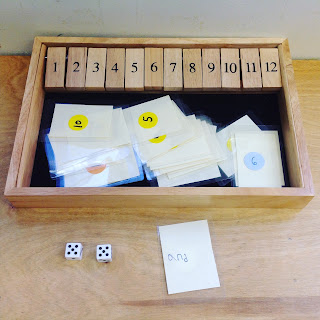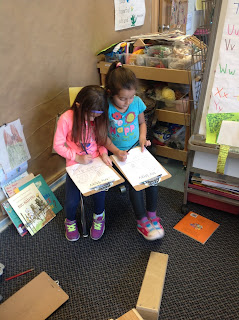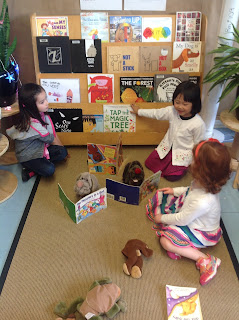Please note that this is one way that literacy can look in kindergarten. My teaching partner and I have reflected on many occasions as to what works best for the children we teach. It's been a learning process and our literacy program has looked quite different from year to year depending on the children's needs, interests, and scheduling. This year we have made changes and are pleased with the way it's working to support our current learners.
Whole Group
-read a louds and shared reading of poems and books
-introducing different types of writing (lists, procedural, books, poems, cards/letters) based on the observations of children's interests
-discussing daily natural occurrences/observations in classroom, home, community etc.
(Inspired by Joanne Babalis)
Small Groups
-children are placed in small groups to further support their learning needs
-introducing new learning concepts (e.g. letter i.d., phonics, word work, literacy games and activities, etc.)
-each child has their own Log Book where they can write about anything that is of interest to them
-Letter cards, sight words, and class co-created alphabet are all used for support with writing
-each child has their own canvas bag containing a few books at their level
-children can grab their bags any time during Exploration Time or at the end of the day where time is allotted for independent reading
-Many of our children enjoy being mentors and support their peers by reading with them
-provocations are set-up to support individual or small group learning
-children can learn at their own pace and in their own way through the process of exploration and investigation
-educators engage with students individually or in a small group to observe the ways the children are learning and interacting with the materials.
-literacy is fostered naturally through children's play
-when creating children practice their communication skills with their friends
-children may choose to document (iPad), do observational drawings, create cards, signs, lists, notes, collect data, or use a "My Story" or "My Plan" template to express their thinking
-depending on the inquiry or project of interest, children can use "I see, I wonder, I think" templates, classroom iPad to take photographs and document their ideas, and creative expression through the use of clay, plasticine, paints, pastels, and open ended materials to express their knowledge and thinking about a particular concept
-during knowledge sharing, children share their observations from their experiments, investigations, and explorations
-children may also seek information by reading books/resources that support a current inquiry or project
-inquiry or project binders are created with the children which allows for their work to be kept in one place and built upon as the inquiry or project progresses
-children enjoy sharing their creations with their friends
-children verbally describe/discuss and/or read what they created and learn to respond and pose questions and comments through the sharing process
-new learning is developed as well as the fostering of new ideas and inspirations through such discussions
Literacy is...the ability to use language and images in rich and varied forms to read, write, listen, speak, view, represent, discuss and think critically about ideas. Literacy enables us to share information and to interact with others. Literacy is an essential tool for personal growth and active participation in a democratic society (Ontario Ministry of Education 2013, 3).
From the book: Multiple Paths to Literacy By: Miriam P. Trehearne













































































Your classroom environment is so inspiring!!! Thank you for sharing!
ReplyDeleteI love everything about your classroom! I wonder if you can answer some questions for me about provocations. How many do you have available at a time? How often are they changed? How do you manage students moving through them? I love my provocations but sincerely struggle with the time to keep them fresh and based on student interest. Any tips would be greatly appreciated. I teach first grade...
ReplyDelete